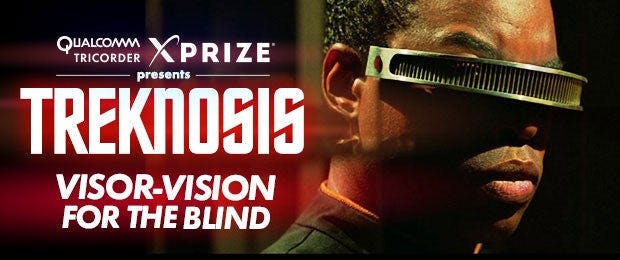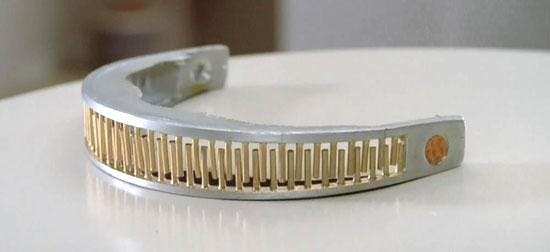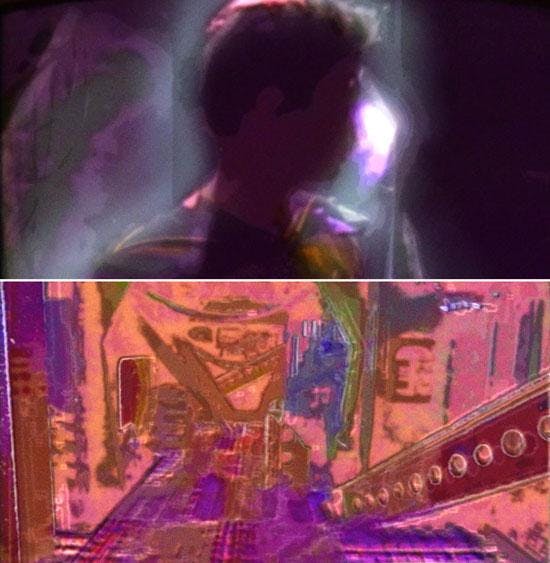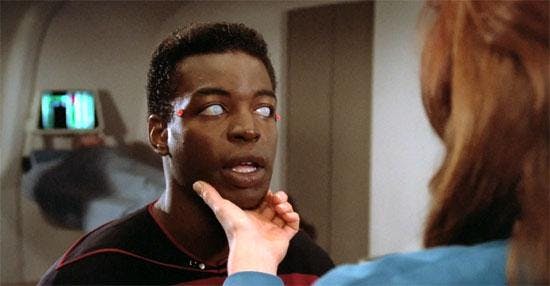Published Jul 14, 2014
VISOR-Vision for the Blind
VISOR-Vision for the Blind

There's no other way to put this: surgeons at the University of Michigan Health System have built a working forerunner to the VISOR worn by Lt. Cmdr. Geordi La Forge, chief engineer of the USS Enterprise in Star Trek: The Next Generation. By our rough calculations, they're about three centuries ahead of schedule. Nice.

Invented by Second Sight Medical Products, the device's official name is the Argus II Retinal Prosthesis System, which is a pretty badass name that I would suggest shortening to "the Argus Array," but as long as we're bringing advanced Treknology into the real world, we should probably save that one for the subspace telescope we'll no doubt be building soon. Here's how the Argus II works:1. You get an implant on your retina that's stuffed with electrodes designed to stimulate the nerves that live there.2. You put the glasses on your face and strap the accompanying video processing computer to your hip, and maybe contemplate for a moment what life as a Bynar would be like.3. Turn everything on.4. The camera on the glasses captures video, which gets sent to the video processor.5. The processor chews on the video and converts it into electrical signals, which get sent back to the glasses.6. The glasses send those signals wirelessly to the implant, which stimulates your retinal nerves.7. You see flashes of light, which over time you'll learn to interpret as generalized figures and light levels.

This is remarkably similar to how Geordi's VISOR works. (BTW, did you know its name is an acronym for "Visual Instrument and Sensory Organ Replacement"? Well, if you didn't, now you do.) The VISOR detects electromagnetic signals including light, processes them onboard, and sends them directly to the brain through neural implants that don't live on the retina. The difference between the VISOR and the Argus II comes down to the degree of technological capability, not the underlying concept; compare the black-and-white TVs of the 50s to the big color ones we all had in the 90s before the prevalence of flatscreens. As early-stage as this device is, it's still an amazing breakthrough, especially when you consider that in the far-flung future of the Federation in the 24th century, they hadn't yet fully perfected the VISOR.
One thing about the VISOR that TNG took a lot of care to bring up as often as possible was the fact that it picked up more than just visible light: it accessed the entire electromagnetic spectrum as seen in this POV from “Heart of Glory.”

This gave Geordi vision that, while confusing to people like us who weren't born with it, was essentially superhuman. He could perceive stresses in hull metal invisible to the naked eye or use infrared emissions to determine when someone was lying. Geordi could literally see neutrinos, something we need huge detectors buried half a mile underground to even begin to track right now. If you had a VISOR, you'd be able to get around in the dark with perfect clarity -- and that'd just be the start. Imagine the sheer super-powered strangeness of being able to see Wi-Fi, satellite signals, or ultraviolet radiation.
All of this would come at a price, though. One other thing about the VISOR that got brought up a lot was that it was a literal pain to use: the sheer amount of signal it dumped into Geordi's implants produced a constant neural overload that presented itself as a headache. Using the VISOR was like trying to drink from a fire hose of data. Geordi deemed it worthwhile, though: he never accepted painkillers or neural dampeners, knowing they would mess with the VISOR's proper functioning, and it's hard to disagree with the man. Would you rather be blind, or have superhuman vision and a constant headache?

Fortunately, it may never come to that extreme a choice. Now that the Argus II has taken the first step and proven the concept, it's just a matter of refining the technology. Would anyone looking at a tiny black-and-white cathode ray tube TV set in 1951 be able to predict fifty-inch 4K LED flatscreens? The improvement in quality of bionically-assisted vision will be its own story, but it seems technologically inevitable, given the pace of our ingenuity. Perhaps we'll tackle the problem of resolution first: going from abstract, nebulous shapes to clearer and clearer images, starting from grayscale and moving on to full color. The data fire hose problem the VISOR encountered could be solved: the TNG writers never imagined the video compression algorithms that squeeze and stream Netflix HD signals to your computer, for example.
Sometime in the future – whether the far future or the surprisingly near one – nobody need ever put up with being blind again. And that might just be the start: maybe there'll come a time when we look back in disbelief that we ever had to rely on something as paltry as the visible spectrum. I wonder what ultraviolet-vision will look like?
source: The Michigan Daily
Jon Sung is a contributing writer for XPRIZE and copywriting gun-for-hire to startups and ventures all over the San Francisco Bay area. When not wrangling words for business or pleasure, he serves as the first officer of the USS Loma Prieta, the hardest-partying Star Trek fan club in San Francisco.
XPRIZE is an innovation engine. We design and operate prize competitions to address global crises and market failures, and incentivize teams around the world to solve them. Currently, we are operating numerous prizes, including the $30M Google Lunar XPRIZE, challenging privately funded teams to successfully land a robot on the Moon’s surface, and the $10M Qualcomm Tricorder XPRIZE, challenging teams around the world to create a portable, wireless, Star Trek-inspired medical device that allows you to monitor your health and medical conditions anywhere, anytime. The result? Radical innovation that will help us all live long and prosper.
Sign up today to join our mission, be a part of our campaign and win collectibles at: tricorderfederation.org.





